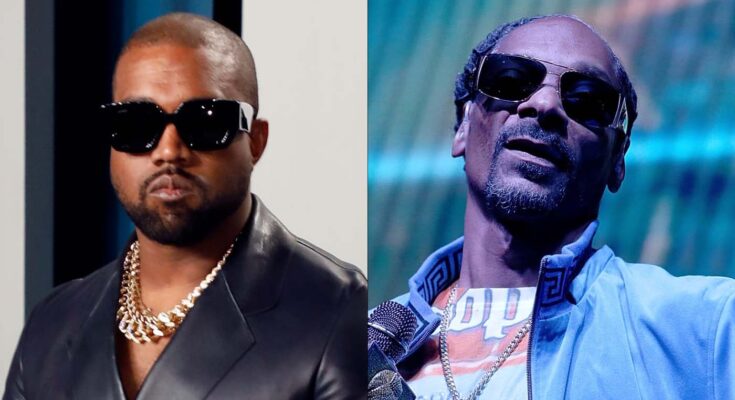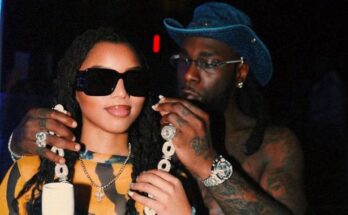Are Artists Removing Music From Streaming For the Best Reasons?
The hip-hop community celebrated when Snoop Dogg bought Death Row Records in early February. It was rightfully heralded as a win for Black ownership, as Snoop was able to take back the figurative house he helped build from MNRK Music Group (formerly Koch Records). Many shrugged when they learned that he planned to turn Death Row into an “NFT label,” resolving that he was smart to get in on the newest craze. But a month later, most Death Row music is missing from streaming platforms, except for TIDAL, and people have questions.
The disappearance of albums like The Chronic and Doggystyle is the latest instance of prominent artists removing their music from the grasp of streaming services. Indie artists like Roc Marciano, R.A.P. Ferreira, and more have incorporated DSP-sidestepping, direct-to-consumer models for years. But now, some mainstream artists like Kanye West, who is selling Donda 2 on his $200 Stem Player, are divesting from DSPs, and the reaction to it has been a mixed bag.
At first glance, some of these decisions have the look of altruistic stands against corporate greed, but a closer look hints that they’re just taking cues from the powers that be. Snoop and Ye both suggested that their decisions will transform the industry for the better, but both of their wealth-building, forced-scarcity actions feel right out of a major label’s playbook. Both Donda 2 and the Death Row catalog are now exclusive items you have to pay a substantial sum for. Artists like Neil Young and Joni Mitchell showed the political power of their catalogs when they had labels remove their albums from Spotify as a protest against Joe Rogan’s COVID vaccine misinformation (and the streaming giant’s decision to stick by the lucrative rabble-rouser). But moves like Kendrick Lamar leveraging his catalog to advocate for XXXTentacion is a bottom-barrel example of using one’s power to uphold oppressive constructs.
Two things can be true at once: artists have the prerogative to do what they want with their music, but those decisions may deprive their fans. And acts with questionable motives risk confusing and annoying the consumers who helped them gain their power in the first place. Is DSP divestment a win for artists, or just wins for individual artists?
Musicians with the mettle and/or finances to take a stand against DSPs will always be applauded on some level because of how inequitable the streaming model is. Last November, writer and indie artist Thijs Nijenhuis published a piece on Medium, divulging how much he makes per stream at the major DSPs. He unveiled the following: Apple paid him $0.0067740 per stream (or $6.77 per 1,000 streams), Spotify paid him $0.0007943 per stream (or $0.79 per 1,000 streams), and Tidal paid him $0.0068473 per stream (or $6.85 per 1,000 streams). Considering that, in theory, an artist could sell their music on a personal website and take the lion’s share of sales, or use a service like Bandcamp that reportedly gives artists 85 percent of download proceeds, the “big 3” DSPs are giving artists a raw deal.
Most signed artists have no choice but to put their music on these platforms, and watch labels make money, hand over fist, from their art. And DSPs aren’t budging on the profit split. In July 2020, Spotify CEO Daniel Ek had the gall to suggest that the solution for an unhappy artist is to simply record more albums. His self-serving suggestion is that more music will build more “engagement with fans,” but it will also bolster Spotify’s catalog. Artists have to accrue millions of song streams on the biggest DSPs just to make America’s minimum wage—and that’s if they’re maintaining 100 percent profit.
Any prominent figure who steps to these greedy beasts will be championed as a disruptor of an industry that wouldn’t be anything without artists, yet opts to pay them virtually nothing.
In early February, Ye said his decision to release Donda 2 on his Stem Player was in part because “songwriters have been really hurt by streaming platforms.” In his Instagram post, he added, “Some say I’m the only one who can make this change. So as the leading innovator in music of the past 20 years. I’m putting my own work on the line to change it… New frontier. Everyone that is supporting our revolution is changing the game for all artists. We no longer have to bow to people who don’t even truly care about music.”
His last point is correct. The music industry is running on an exploitative model. Labels and streaming services are overrun by old white executives and trustees who probably couldn’t tell you the difference between DaBaby and Lil Baby before Rolling Loud 2021, yet they’re living their best Hamptons lives off the minds of starving creators. Streaming services made $12.4 billion in 2021, and artists are getting a paltry split of that.
The pie needs to be more equitable, if not inequitable in the artist’s favor. Labels can’t even make excuses about the production costs of CDs or cassettes anymore. Everything is digital now, which means they’re making unprecedented profit margins from music.
There was a point in the 2000s when people thought that MP3s and illegal downloading would crumble the industry. They faltered for a time, as they figured out how to capitalize on the internet, but now they’ve entrenched a system that’s in lockstep with the continuously unfair industry models that artists have had to endure for almost a century. That has to change.
Kanye is the most visible anti-streaming advocate to date, but he’s far from the first. Independent rappers like R.A.P. Ferreira, Ka, Roc Marciano, and many more have been releasing music exclusively on their own websites as a means of retaining better profits. Roc Marciano told DJBooth in 2018 that he put his Rosebudd’s Revenge album on his RocMarci.com website. “This shit is printing money,” he said. “The return on investment happened in a day. I was in the black in a day.” Since then, he’s been judicious about his releases, selling albums first on his website, then later releasing them to streaming services. Roc also told DJBooth, “Don’t get it twisted: I want people to have the art. But if you’re not supporting me, then I can’t give you the art.” Therein lies the difference. Indie artists release their music independently in order to be able to pay their rent and bills from their music. Kanye is a self-described multi-billionaire without those qualms. He’s already in the black, figuratively speaking. While he was on point about the need to revolutionize the music industry, it’s not unfair to think this is also a right message, wrong messenger situation.
Kanye’s call for people to buy his $200 stem player as the first salvo feels somewhat self-serving. The Stem Player, which allows people to make mixes with music they can upload on the Stem Player site, is an innovative device that is fun to play with. But it’s also a high-price product that aligns with his expensive, exclusive shoes and clothing collabs with Gap and Adidas. He’s made $2 million in sales as of late February, and Kanye said in a since-deleted IG post that it secured “9.5 million in lifetime net revenues.”
Music Business Worldwide reported in February that Stem Player manufacturer Kano is making 3,000 stem players a day, and explained that “even if the Stem Player generates massive demand and sells out before Tuesday, Donda 2 would still only (legally) be heard by less than 125,000 Stem Player-owning Ye fans.” We need more answers to the DSP problem, but revolution by way of a $200 product with forced exclusivity isn’t it. Ye’s current play is his prerogative, but it doesn’t feel like a collective win. It has the feel of a lower-scale version of a model that feeds Kanye’s obscene wealth, in the same way DSP revenue feeds executives and investors.
So, while some would be correct in giving Kanye credit for amplifying the idea of alternatives to DSPs, others aren’t far off by noting that he’s co-opting the notion of freeing artists to make millions, which places him closer to the power he’s criticizing than his artistic peers. And it’s keeping many of his fans from accessing his new music. The Jeen-Yuhs documentary just showed us his humble beginnings; it’s worth wondering how many broke, aspiring artists aren’t getting the chance to be inspired by Donda 2 because they can’t afford his Stem Player and don’t have access to the music.
Kanye has said he refused Apple’s $100 million offer for Donda 2 exclusivity in part because Apple CEO Tim Cook didn’t take a meeting with him. Would he have had no problem working with Apple if Cook had met him and offered to partner with him? Would he have still been as vocal about divesting from DSPs in that scenario? No one can say for sure, making this a polarizing situation.
Snoop Dogg expressed similar artist-first intent about turning Death Row into an NFT label, recently telling a Clubhouse room that “just like we broke the industry when we were the first independent to be major, I want to be the first major in the metaverse.” Snoop added, “Blockchain tech has the power to change everything again and tip the table in favor of the artists and the fans.”
Snoop Dogg is now the owner of every album released on Death Row, except Tupac’s Death Row albums (owned by Amaru Entertainment) and Dr. Dre’s The Chronic (which will reportedly convey to Snoop in 2023). And while he, more than almost anybody, deserves to own the Death Row catalog, there’s some confusion about what he’s set to do with it. Snoop’s newly purchased music has been pulled from DSPs (except for TIDAL). And while Donda 2 is a new project, albums like Doggystyle and Dogg Food are firmly in the hip-hop canon. Millions of fans who have come to love Death Row’s catalog are now scrambling for ways to listen to it, with no explanation about what’s going on or when they will return to DSPs (if they do at all). The predicament exemplifies the fleeting nature of our digital marketplace. Many hip-hop consumers rely on DSPs to hear their favorite music, but it’s not a static environment. It’s not as trusty as a CD or vinyl record that you can hold in your hand, keep on your bookshelf, and play on-demand. Songs can disappear from streaming services at any time, for any reason.
As vocal coach and musician Beth Roars stated in an article about the pros and cons of NFTs for music, “Anything with built-in scarcity is attractive to those who can bid the highest price, cutting off a huge percentage of the population even if they’re just as passionate about the music but have less ability to finance a big purchase.” It sounds like she’s talking about rap consumers who are at risk of losing out on DSP access to Death Row music to people who are rich enough to pay for exclusive access.
Is Snoop’s divestment in the best interest of all Death Row artists, or just him? He championed the purchase as a chance to “tip scales for artists,” but were any of the living Death Row acts consulted about their music being taken off streaming services? Will they receive a share of profits from the NFT deal? Former Death Row performers Jewell and Danny Boy have both expressed concerns about whether he will take care of former label artists who are still owed money from the Suge Knight era. Snoop is likely absolved of any obligation to pay their debts, but hopefully he puts his money where his “for-artists” rhetoric is and looks out for his former peers. An artist buying a label is only worth celebrating if they outdo the execs and break bread with their peers, but if the impending NFT purchases only fill his pockets, then he became just another self-serving music boss.
We champion independence and Black ownership, but often overlook that at the heart of the independent ethos is the betterment of the community. The point of seeking independence is to create a pathway for the collective to also divest from exploitative business models. In the most thriving indie scenes, “for the artist” and “for the culture” means “for the people,” as well. In theory, alternative music releases are supposed to help topple greedy corporations with a more community-focused model. But while Ye and Snoop’s recent moves helped them profit, how many people can actually afford to emulate them? What is the net gain for artists and listeners? To this point, it’s been mostly loss so far. Ye and Snoop used the power consumers gave them to respectively bankroll a pricey music gadget and buy their old label. And that’s why it’s troubling that those same consumers will now be deprived of access to their music because of a chance for them to make more millions.
It’s troubling that most of rap’s brushups with DSPs have only upheld powerful constructs. While Neil Young got Warner Bros. Records to remove his music from Spotify in response to Joe Rogan making them “the home of life-threatening Covid misinformation,” the biggest example of an artist using their music to take a stand is Kendrick Lamar defending the late XXXTentacion, who was accused of grisly abuse of his ex. In 2016, Spotify pulled XXX and R. Kelly off of playlists due to their Hate Content & Hateful Conduct Policy, which was a response to calls to de-platform abusive artists.
Top Dawg stated, “I don’t think it’s right for artists to be censored, especially in our culture.” But the policy wasn’t about censoring XXXTentacion’s lyrics—he was still going to be on the app. Spotify was attempting to appease fans who didn’t want them giving XXXTentacion a platform while he was unrepentant about repeated physical abuse of his ex. In the end, big money won out, and Spotify relented from the policy to keep Kendrick’s catalog. For Kendrick, supporting rap’s boy’s club took precedence over empathy for a victim. And for Spotify, keeping an in-demand, platinum act happy was their priority. It’s a low moment for Kendrick and TDE.
When Neil Young came out against Rogan’s COVID misinformation on his podcast, he called the situation “lies being sold for money.” The hope is that our favorite artists aren’t doing the same by hiding behind the idea of “power to the artists” to line their own pockets with transactions that the average artist doesn’t have the power to emulate. – Complex





Comments are closed.